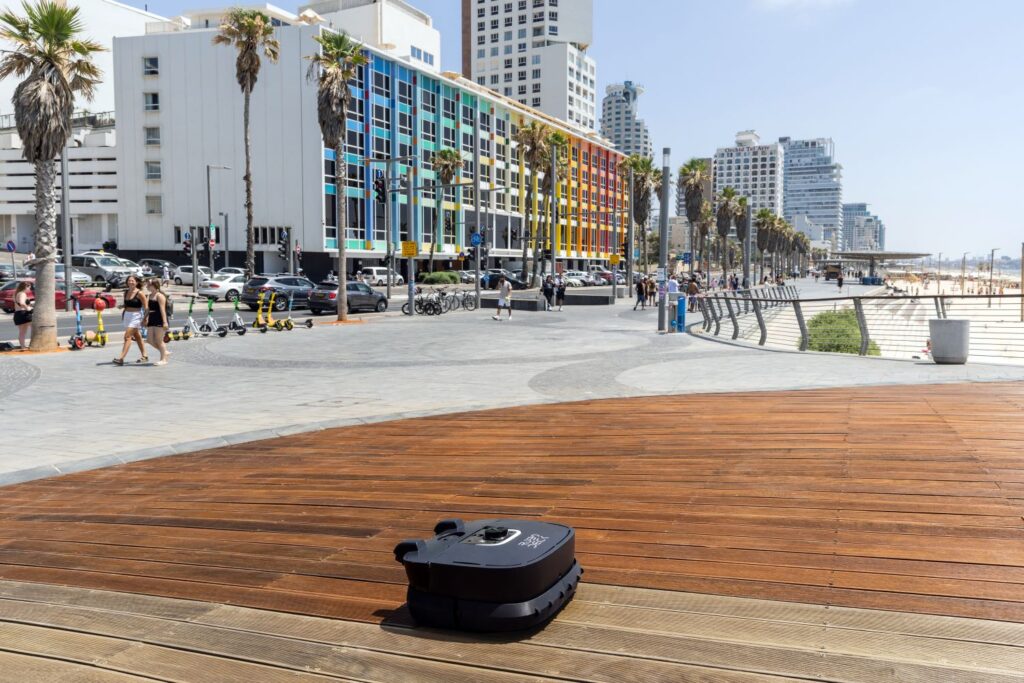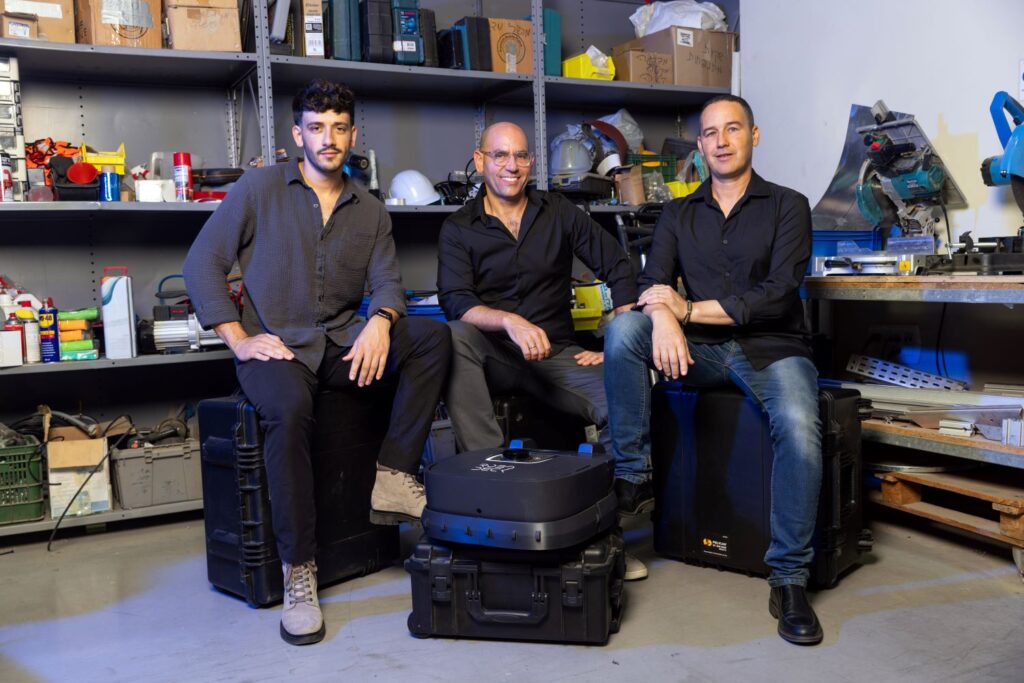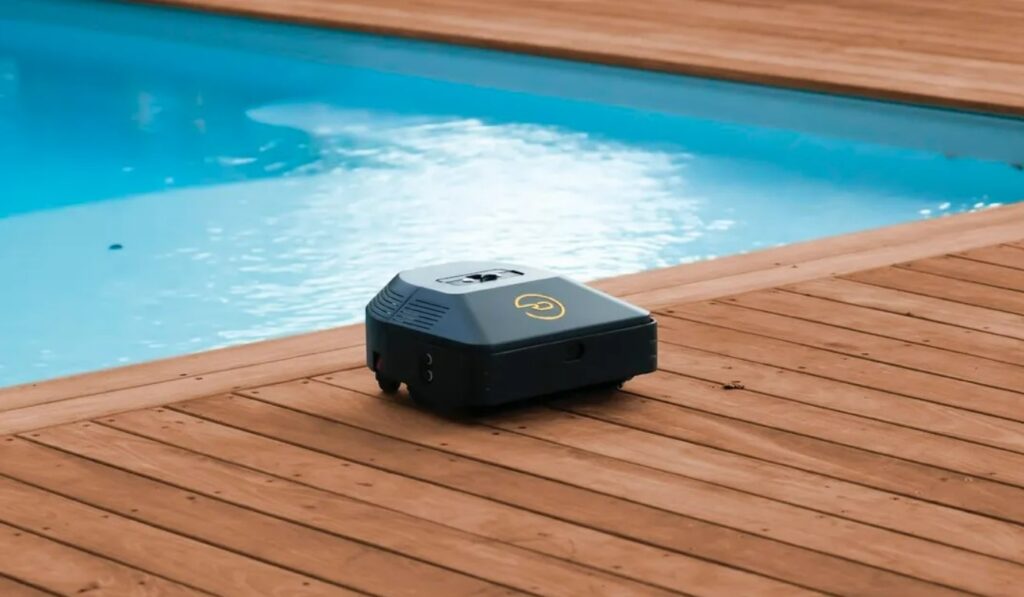Anyone taking a stroll along Tel Aviv’s wooden promenade cannot fail to admire the overall splendid condition of the decking.
This well-preserved state is the work of a fully automated deck maintenance robot created by RoboDeck, a Hod Hasharon-headquartered company.
Almost like an AI Roomba for your woodwork, the RoboDeck is autonomous, following a preprogrammed plan to clean, treat and varnish the decking.
The device, which looks like a 50-percent larger version of the ubiquitous automated floor cleaner, has multiple technological functions and uses artificial intelligence to perform its job.

The robot is fully autonomous, RoboDeck co-founder and CPO Noam Rand says. Its navigation capabilities allows it to stay on the deck and not fall off, and it can maneuver around obstacles such as furniture or plants.
“One of the big breakthroughs is a very accurate systematic navigation,” Rand says, which is necessary as the robot is essentially painting the surface.
The robot also uses a LiDAR camera, similar to the one used on autonomous cars, as part of its range of technological features. It works alongside RoboDeck’s proprietary sensor to provide what Rand says is “millimeter level accuracy.”
Another feature is the cloud-connected mapping system that the robot uses to work out the area of the decking it is working on.
This mapping system also logs any potential hazards it encounters, such as protruding nails or broken wood, which could prove dangerous to people walking on the deck.
The information about the potential hazards is transmitted to the cloud along with their location so that they can be dealt with. The app to operate the robot and view the information in the cloud can be accessed via a smartphone.

The inbuilt cleaning system allows the robot to move through the various steps of cleaning and treating the deck. The staining is done using recyclable cartridges that Rand says are easily replaced and can hold a variety of different materials.
RoboDeck CEO and co-founder Gal Frenkel explains that the platform is built on the premise that continuous maintenance is more advantageous and avoids costly repairs that come when decking is left untreated for extended periods.
He says that the manual process can take between two and five days to complete, depending on the size of the deck. First, a chemical strips off the existing oil and dirt from the wood, after which it is cleaned with a power washer and sanded. When these stages are completed, and the wood has dried, it is stained and coated with a protective layer.
“This process has multiple steps and it’s very labor intensive – and that together equals expensive,” Frenkel says.
Sign up for our free weekly newsletter
Subscribe
According to Rand, the robot performs the maintenance about 10 times more quickly than the manual process – which is vital for businesses who cannot afford to close off swathes of their outdoor spaces for cleaning.
“We have no downtime, which is really crucial for commercial customers,” he says.
Prevention Over Cure
There is a massive market for deck maintenance, especially in the US, where a total of some $20 billion is spent every year on it, Rand says.
And while that seems like an astronomical amount, he explains that there are 60 million decks in the United States – 50 million in residential homes and 10 million in commercial properties such as hotels, restaurants and public boardwalks. These include patios, front porches and, of course, poolside areas.

Frenkel says it was his own miserable experience with maintenance of the decking around his own pool that led to the creation of the device.
The year after his deck was installed, Frenkel called to complain about the poor state the wood was in. The decking specialist laughed and told him that the wood had to be maintained every year in order to look good and – more importantly – be safe to use.
Rand says that deck owners generally do not abide by a maintenance program, due to the time and money involved in doing this manually. And so they leave the wood until it is in such a poor state that it needs to be fully restored.
“Your deck looks good, and then it degrades until it either looks really bad or it’s unsafe, and you restore it again. And then it degrades. That process doesn’t really make sense, but it is a result of the high cost, downtime and the labor intensity,” Rand says.
He explains that there are robots that perform cleaning duties outdoors, such as in parking lots and pedestrian areas, but RoboDeck is the only robot in the world that’s dedicated to deck maintenance.

Today, three years after its creation, RoboDeck also operates out of California, where it has an agreement with the largest deck maintenance company on the West Coast.
It also has its sights set on the Australian market, with tentative plans to enter into an agreement with a “very large woodcare brand,” although Rand says this is still in the future.
“Our mission is basically to make the maintenance of outdoor living areas easy and affordable for everyone so that they can enjoy it, whether it’s homeowners, municipalities or professionals,” he says.
Related posts

Editors’ & Readers’ Choice: 10 Favorite NoCamels Articles

Forward Facing: What Does The Future Hold For Israeli High-Tech?

Impact Innovation: Israeli Startups That Could Shape Our Future




Facebook comments